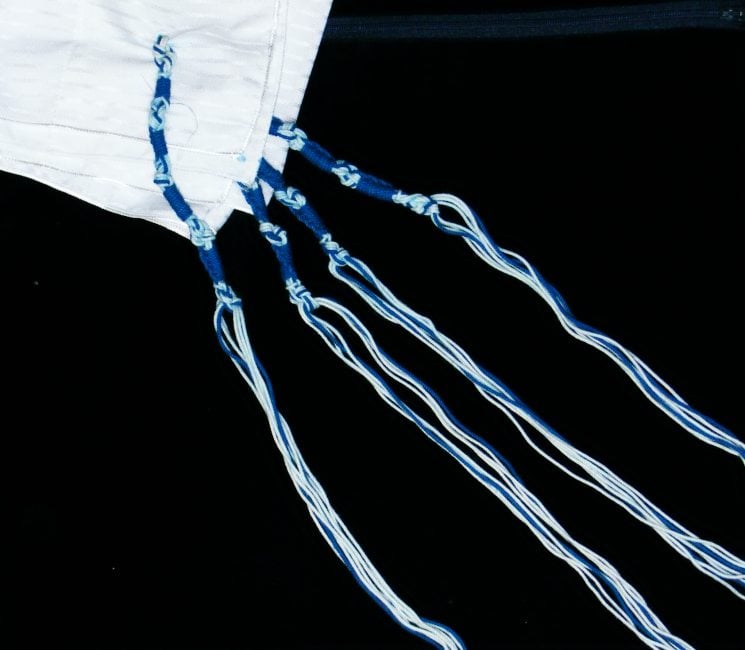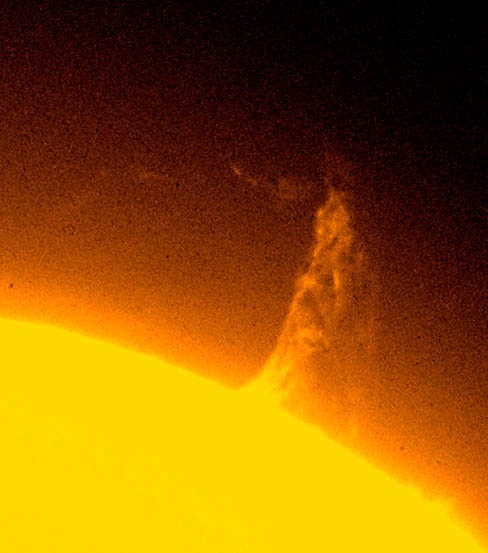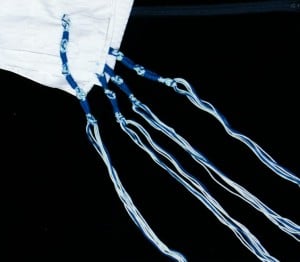Speak to the children of Israel and you shall say to them that they shall make for themselves fringes on the corners of their garments, throughout their generations, and they shall affix a thread of sky blue [wool] on the fringe of each corner.” (Num. 15:38)
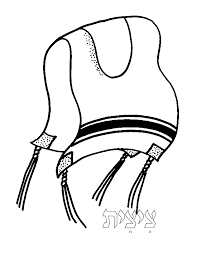
It was 1970, as I recall, and I was about 13 years old at the time. Growing up in Russia, alas, I didn’t have a Bar Mitzvah, so I wasn’t busy studying Torah or preparing for my Bar Mitzvah. Instead, I was busy reading and thinking about physics. I was fascinated with the concept of a field, be it a gravitational field or electromagnetic field responsible for charged particle attracting or repelling each other depending on their charge. I studied Newton’s law of universal gravitation and Coulomb’s law for electrical fields, and the math made sense. But I couldn’t understand how it all worked. After all, I thought, charged particles were separated in space. Formulas aside, what on earth tells the particles to move towards each other or away from each other? Similarly, neutral bodies devoid of electric charge still attract each other because of their mass—this is called gravity. But whether you talk about an electromagnetic field of a gravitational field, what is it exactly? I wasn’t the first person to ask this question, of course. Isaac Newton pondered it centuries before me. After having formulated his famous universal law of gravity, the inverse square law (interestingly, Coulomb’s law is also the inverse square law), he was disturbed by this action at a distance. In 1692, in his letter to a Cambridge philosopher, Richard Bentley (1662 – 1742), he wrote: “That one body may act upon another at a distance through a vacuum without the mediation of anything else, by and through which their action and force may be conveyed from one another, is to me so great an absurdity that, I believe, no man who has in philosophic matters a competent faculty of thinking could ever fall into it.” This “absurdity” did not let me sleep.
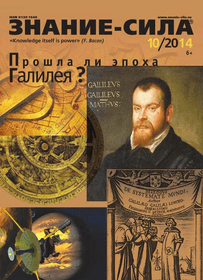
After months of thinking about this problem, I finally got my lucky break. I used to subscribe to a Russian magazine “Znani’e – Silah” (Knowledge is Power), a Russian popular science magazine similar, perhaps, of the Scientific American magazine. Besides physics, I was also interested in biophysics. One issue of this magazine contained a short article written by a group of biophysicists from Novosibirsk Academy of Science and the article was about cell division. It was well known that before cell divided, its chromosomes got into motion: first they assembled in the middle of the cell (the metaphase); then, after splitting into two groups, they moved to the opposite poles of the cells (the anaphase); after which the cell would divide in the middle into two, each new cell containing one complete set of chromosomes (the telophase). The scientists in Novosibirsk asked themselves a question, what made the chromosomes move? Why would chromosomes sometimes move toward each other (as in the metaphase) and at other times away from each other (as in the anaphase)? The researches took a look at the dividing cell under the electronic microscope and saw something interesting—protuberances akin those observed at the surface of the sun.

I vividly recall the photograph of the dividing cell published in that magazine with the tall narrow splashes on the surface of the cell. One of the researchers recalled having seen similar “splashes” on a surface of a viscous liquid when a source of ultrasound vibration was immersed in such liquid. A cytoplasm—the intracellular fluid—comprised of a gel-like substance called “cytosol” was just such viscous liquid. The researches posited that, perhaps, chromosomes emit ultrasound signals that cause the protuberances on the surface of the cell. That would seem to explain the problem.
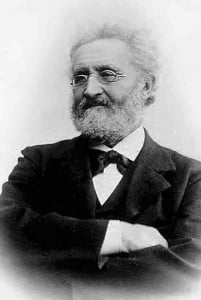
At the end of 19 c., a Swedish mathematician and physicist, Carl Anton Bjerknes (1825-1903) discovered that two pulsating or vibrating bodies immersed in a liquid attract or repel each other depending on the phase of the vibration. If two spheres pulsate in a fluid in phase, they will attract each other; and if they pulsate not in phase, they will repel each other. In hydrodynamics, this is known as the Bjerknes effect. There you have it—depending on the phase of chromosome vibrations in the cytoplasm, they will either attract, gathering at the center of the cell, or repel, moving to the opposite poles of the cell.

So far as I know, this theory never panned out. No matter, it was enough to get my mind racing. Shortly after I read that article, I had my Eureka moment. What if we posit that all subatomic particles, like electrons, protons, and neutrons, were suspended in some sort of universal fluid, such as aether, I thought. What if they are not particles at all but, like chromosomes, they are little strings vibrating in the ether. Then, depending on the phase of the vibration, elementary particles, which are not really particles but vibrating strings, will either attract to each other or repel. My hypothesis, I thought, would explain the electric charge and gravitational mass as the phase of the vibration of a string-particle in the aether and, therefore, explain the electromagnetic and gravitational forces.
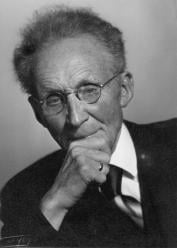
Little did I know that Carl Bjerknes proposed this very idea about 100 years before me, in 1871. Lord Kelvin also expressed a similar idea, although less developed, in 1871. Carl’s son, Vilhelm Bjerknes, who later went on to become one of the founders of modern meteorology, at the age of 18 built a series of instruments, by which electricity and magnetism were illustrated and reproduced by spheres, discs and membranes set into rhythmic vibration in a bath containing a viscous fluid such as syrup.
Oblivious of these prior developments, I naively reinvented this theory almost hundred years later. The only new element I added to Bjerknes’ theory, who though particles where pulsating round spheres, was the idea of vibrating strings, which was inspired by the shape of chromosomes. I even came up then with a name for my particle-strings—I called them “Qromosomes“ for Quantum Chromosomes.
Ultimately, Bjerknes’ idea failed as so did mine. But, details aside, the idea of viewing elementary particles as vibrating strings whose fundamental properties, such as charge, are determined by their vibrations is the essence of the string theory that was being developed at the same time unbeknownst to me in the US.
I reminisced about this while reading about tzitzit. Aside from the linguistic similarity between quantum strings and the strings of the tzitzit, is there any substance to this far-fetched parallel? What does all this attraction and repulsion have to do with the tzitzit? Jewish sages tell us that white strings in the tzitzit symbolize aseh tov—doing good, running toward a mitzvah, attraction to goodness. A blue string, tehelet, on the other hand, symbolizes sur merah—running away from sin, repulsion from evil. There you have it: different colors—i.e., different optical frequencies—are associated with spiritual attraction to good and repulsion from evil. Too bad I didn’t get to wear my first tzitzit until years after I invented my naïve “string theory.” Now, I don’t leave home without it!
